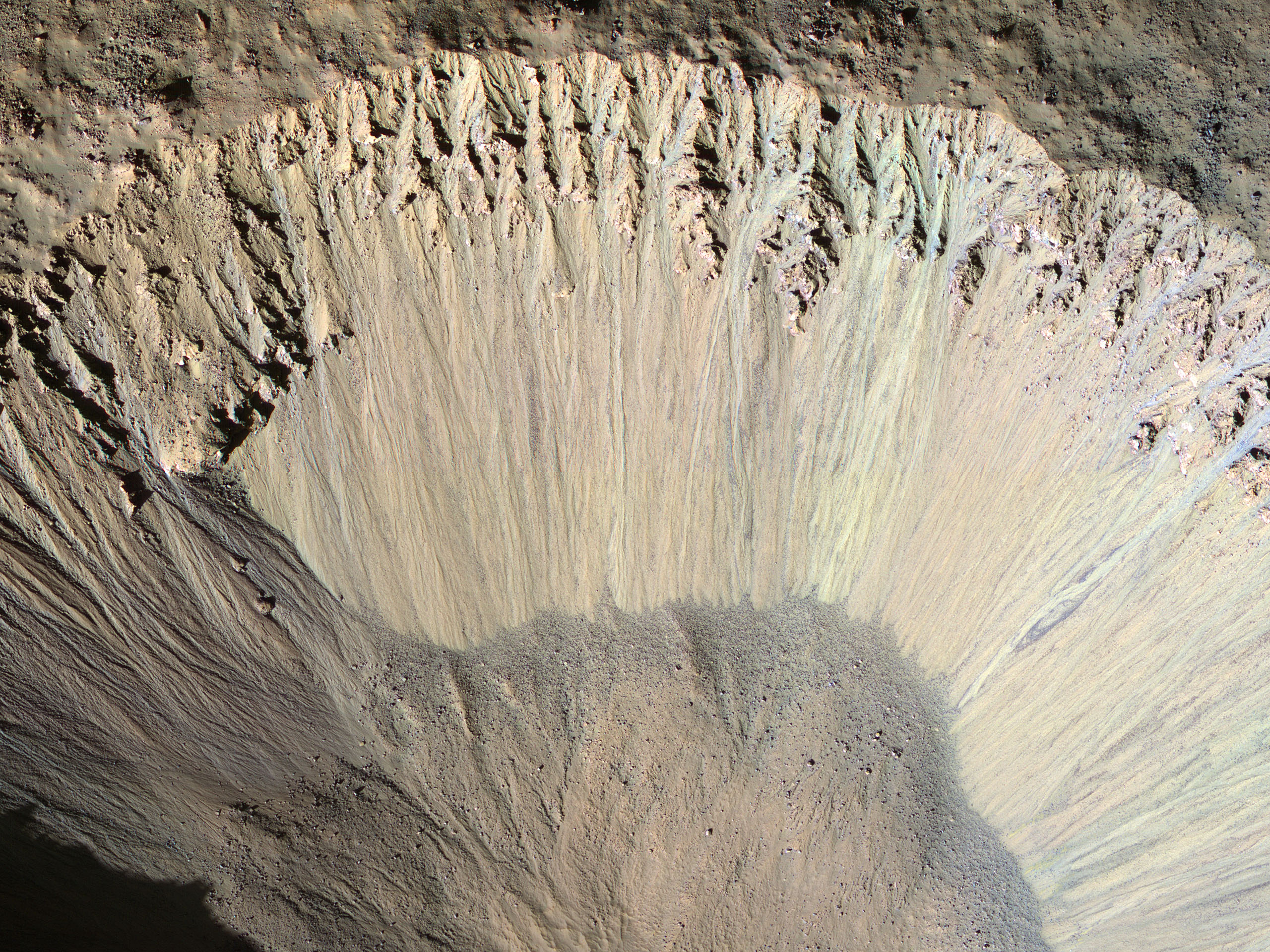This image covers a “fresh-looking” impact crater with a diameter of about 2 kilometers (1.2 miles).
There are gullies all around the steep inner slopes of this crater (you can even see them in the shadow by enhancing the brightness of this region), at 35 degrees south latitude. Many craters at this latitude in the Southern Hemisphere only have gullies on the south-facing slopes, which are shadowed in the wintertime. But this is an especially pristine crater so the slopes may be particularly steep and unstable.
The enhanced color cutout shows that gullies and their deposits have many different colors. This is due to diverse rock types exposed by the crater and the fact that the gullies have been recently active, so colors have not been homogenized by overlying regolith (soil) or windblown deposits. HiRISE will monitor this site in the future to see if the gullies are currently active.
How long ago did this crater form? It appears nearly pristine, preserving meter-scale morphologies in the ejecta, and there are almost no superimposed (younger) impact craters, so it is probably less than a million years old. That means the crater formed in the most recent 0.02 percent of Mars’ existence. The ejecta includes a “herringbone” texture with V-shaped features pointing to the source crater.
ID:
ESP_024927_1445date: 20 November 2011
altitude: 251 km
https://uahirise.org/hipod/ESP_024927_1445
NASA/JPL-Caltech/University of Arizona
#Mars #science #NASA
